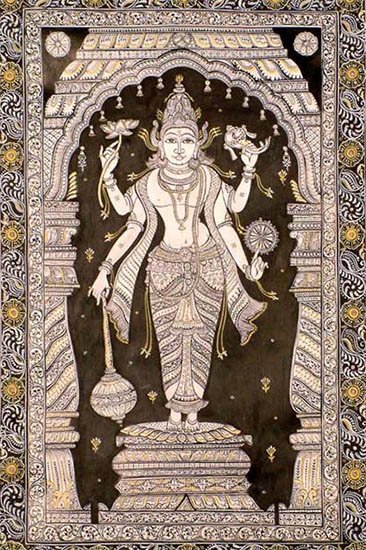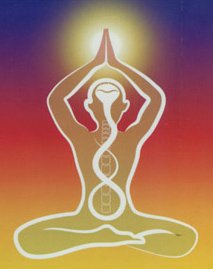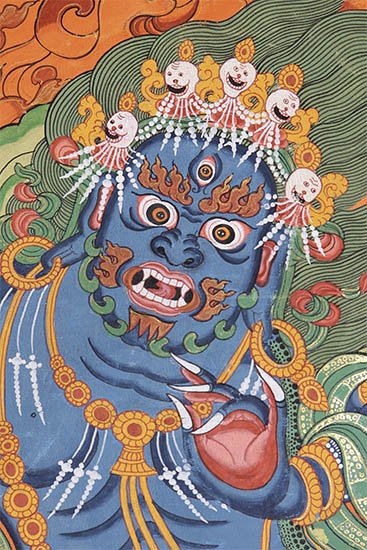Bhayahara, Bhayaharā: 3 definitions
Introduction:
Bhayahara means something in Buddhism, Pali, Hinduism, Sanskrit. If you want to know the exact meaning, history, etymology or English translation of this term then check out the descriptions on this page. Add your comment or reference to a book if you want to contribute to this summary article.
In Hinduism
Shilpashastra (iconography)
Source: Wisdom Library: Śilpa-śāstraBhayahara (भयहर) is a Sanskrit name referring to one of the eight manifestations of Bhīṣaṇa, who is a form of Bhairava. According to the Rudrayāmala, there are eight main forms of Bhairava who control the eight directions of this universe. Each form (e.g., Bhīṣaṇa) has a further eight sub-manifestations (e.g., Bhayahara), thus resulting in a total of 64 Bhairavas.
When depicting Bhayahara according to traditional iconographic rules (śilpaśāstra), one should depcit him (and other forms of Bhīṣaṇa) having a yellow color and should carry in his hands the kuṇḍa, the kheṭaka, the parigha (a kind of club) and bhiṇḍipāla. The word Śilpaśāstra refers to an ancient Hindu science of arts and crafts, dealing with subjects such as painting, sculpture and iconography.

Shilpashastra (शिल्पशास्त्र, śilpaśāstra) represents the ancient Indian science (shastra) of creative arts (shilpa) such as sculpture, iconography and painting. Closely related to Vastushastra (architecture), they often share the same literature.
Yoga (school of philosophy)
Source: Brill: Śaivism and the Tantric Traditions (yoga)Bhayaharā (भयहरा) refers to “she who removes the danger (of death)”, according to the Amṛtasiddhi, a 12th-century text belonging to the Haṭhayoga textual tradition.—Accordingly, “At the navel is a white lotus. On top of that is the spotless orb of the sun. In the middle of that, at the triple pathway, is she who is the sole essence of saṃsāra [and] the creator of the three worlds, who arises on the path of dharma, who has three bodies [and] who is lauded as Chinnamastā, “she whose head is cut.” I worship her, she who has the form of knowledge, who removes the danger of death (maraṇa-bhayaharā), the Yoginī, the seal of Yoga”.

Yoga is originally considered a branch of Hindu philosophy (astika), but both ancient and modern Yoga combine the physical, mental and spiritual. Yoga teaches various physical techniques also known as āsanas (postures), used for various purposes (eg., meditation, contemplation, relaxation).
In Buddhism
Tibetan Buddhism (Vajrayana or tantric Buddhism)
Source: OSU Press: Cakrasamvara SamadhiBhayahara (भयहर) refers to “removing fear”, according to the Guru Mandala Worship (maṇḍalārcana) ritual often performed in combination with the Cakrasaṃvara Samādhi, which refers to the primary pūjā and sādhanā practice of Newah Mahāyāna-Vajrayāna Buddhists in Nepal.—Accordingly, “In praise (of) Śrī Vajrasattva, highest universal guru, origin of all Buddhas, By various forms, removing darkness and fear [e.g., bhayahara—timira-bhaya-haraṃ], fixed resting on Meru. Dharma sustainer, chief sage, most fortunate victor, Vajradhātu mandala, In one form with all bliss, innate bliss, embodied, the cause for liberation”.

Tibetan Buddhism includes schools such as Nyingma, Kadampa, Kagyu and Gelug. Their primary canon of literature is divided in two broad categories: The Kangyur, which consists of Buddha’s words, and the Tengyur, which includes commentaries from various sources. Esotericism and tantra techniques (vajrayāna) are collected indepently.
See also (Relevant definitions)
Starts with: Bhayaharaka, Bhayaharastotra.
Ends with: Maranabhayahara.
Relevant text
Search found 1 books and stories containing Bhayahara, Bhayaharā, Bhaya-harā, Bhaya-hara; (plurals include: Bhayaharas, Bhayaharās, harās, haras). You can also click to the full overview containing English textual excerpts. Below are direct links for the most relevant articles:
The Skanda Purana (by G. V. Tagare)
Chapter 29 - Gaṅgā-Sahasranāma (A Thousand Names of Gaṅgā) < [Section 1 - Pūrvārdha]